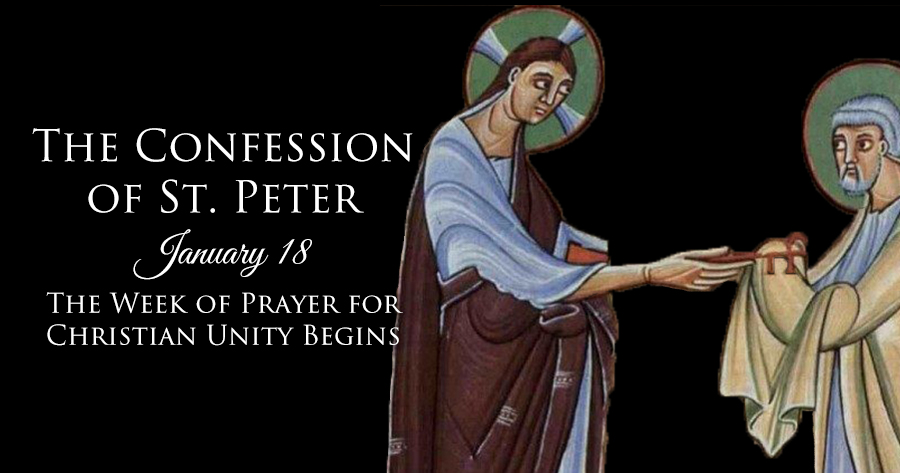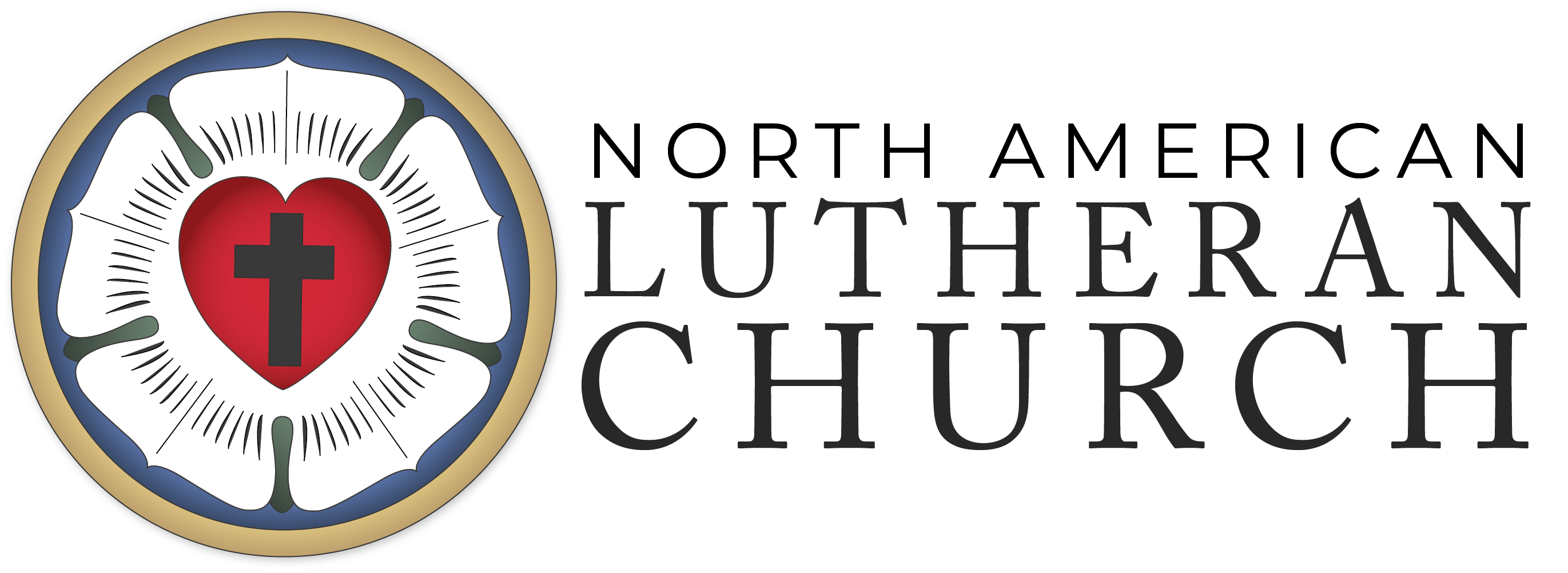
About the Commemoration
The Week of Prayer for Christian Unity Begins
Since the fourth century there has been a festival of Peter, called the “Chair of Peter” which honors both Peter as the head of the Roman Church and also his cathedra, his chair of episcopal authority as the focus of Church unity founded on the leader of the twelve apostles. The Roman Catholic Church now observes this feast on February 22, the older date, but because it often falls in Lent many churches had moved the celebration to February 18.
The Episcopal Church in the 1979 Book of Common Prayer took the feast of the Chair of Peter with its gospel of Peter’s confession that Jesus is “the Christ, the Son of the living God,” renamed it the Confession of St. Peter, and set it at the beginning of the Week of Prayer for Christian Unity. The calendar in the Lutheran Book of Worship followed that precedent and gave the week of prayer a standing in the calendar that is unequalled in any other church.
The martyr deaths of Peter and Paul are commemorated jointly on June 29. St. Paul has a festival of his own marking his conversion (January 25), which is the conclusion of the Week of Prayer for Christian Unity. It therefore seemed logical to the drafters of the Book of Common Prayer and the Lutheran Book of Worship to introduce a festival of St. Peter and to set it at the beginning of that week, thus including the week in the calendar of the church. The Week of Prayer for Christian Unity is therefore set between the two great apostles of Christianity, Peter and Paul. Moreover, the two represent in a way the two faces of biblical tradition: Peter, the apostle to the Jews, represents the Mosaic tradition of law, and Paul, the apostle of the Gentiles, represents the Abrahamic tradition of faith.
When Peter with characteristic boldness confessed, You are the Christ and the Son of the living God,” Jesus responded, “You are Peter, and on this rock I will build my church.” The exact referent of “rock” is much disputed, some claiming that it is Peter himself, some claiming that it is Peter’s confession. The one who made the great and central confession of the Christian faith was himself a fisherman, impetuous, often stumbling, intense, who at the arrest of Jesus denied knowing him. After the resurrection, however, he strengthened the church and was its acknowledged leader, courageously preaching the news about Jesus, and eventually laying down his life for his Lord.
Peter’s traditional symbol in Christian iconography is two crossed keys, representing the power to bind and to loose, bestowed on him by Jesus (Matt. 16.9, today’s Gospel).
Prayers for the unity of the divided church date at least from the time of the Reformation. (See Archbishop Laud’s well-known prayer for the Church given earlier at January 10.) The first Lambeth Conference of Anglican bishops in 1867, in the Preamble to its Resolutions, emphasized prayer for unity. In 1894 Pope Leo XIII encouraged the practice of a Prayer Octave for Unity in the context of Pentecost. Paul Wattson, an Anglican priest who later became a Roman Catholic, initiated a Church Unity Octave in January 1908. In 1926 the Faith and Order Movement began the publication of “suggestions for an Octave of Prayer for Christian Unity.” Abbe Paul Courtier in 1935 in France advocated a Universal Week of Prayer for Christian Unity on the basis of prayer “for the unity Christ wills by the means he wills.” In 1964 the Second Vatican Council in its Decree on Ecumenism (II.7) emphasized that prayer is “the soul of the whole ecumenical movement” and encouraged prayer for Christian unity.
James Keefer has suggested a helpful plan for comprehensive prayer for Christian unity:
January 18: Eastern Orthodox, Coptic, and other Eastern Churches
January 19: Roman Catholic and Uniate Churches
January 20: Anglican, Old Catholic, and allied churches
January 21: Lutheran, Moravian, and Methodist Churches
January 22: Congregational, Presbyterian, and Reformed Churches
January 23: Baptist, Amish, Mennonite, Hutterite, and Christian (Disciples of Christ) Churches
January 24: Pentecostal and charismatic churches
January 25: Nonmainstream communities; theologians and councils seeking to promote Christian unity while preserving Christian truth.
Excerpts from New Book of Festivals & Commemorations: A Proposed Common Calendar of Saints by Philip H. Pfatteicher, copyright, 2008 by Fortress Press, an imprint of Augsburg Fortress.
See also: Confession of Peter; Week of Prayer for Christian Unity
Reading
From Peter: Disciple, Apostle, Martyr by Oscar Cullmann
[D]uring the lifetime of Jesus Peter did not show himself a “rock” at all; on the contrary, his human weakness was very striking. The scene at the Sea of Genessaret gives a concrete illustration of Peter’s character. He is impulsive and enthusiastic; in the first burst of enthusiasm, he does not hesitate to throw himself into the sea when Jesus calls him, but his courage soon fades and fear grips him. So, too, he is the first to confess loudly his loyalty to his Master, but he is the first one who will deny him in the hour of danger. And yet, so one assumes, precisely this character, with its notable contradictions, makes Peter appear as the disciple with special psychological fitness to be the “rock” among the other disciples. The exuberant enthusiasm, the fiery zeal of this disciple are said to be in fact the human qualities that are necessary to deserve such a title of honor. His instability and weakness are said to be only the dark side of these qualities.
Nevertheless, it is hardly possible to give a psychological basis for the unique position of Peter and for the giving to him of this name. Indeed, we should not ask at all why Jesus singled him out as “rock” instead of choosing another disciple. According to our sources, we can only confirm the fact of this distinction. Probably, however, it is also a mistake to say that the representative position of the disciple Peter and the qualities mentioned were derived only from the giving of the name. We can hardly say that only by this act did he become conscious that in his person he represented, so to speak, the totality of the disciples, even during the earthly life of Jesus. Again we can only state the fact: Peter lets us see clearly everything that the call to discipleship involves in human weakness and privilege.
Oscar Cullmann, Peter: Disciple, Apostle, Martyr, trans. Floyd V. Filson, 2d rev. ed. (Philadelphia: Westminster, 1962), 31-32.
Propers
Almighty God, who inspired Simon Peter, first among the apostles, to confess Jesus as Messiah and Son of the living God: Keep your Church steadfast upon the rock of this faith, so that in unity and peace we may proclaim one truth and follow the one Lord, our Savior Jesus Christ; who lives and reigns with you and the Holy Spirit, one God, now and forever.
BCP, based on RS February 22
Readings: Acts 4:8-13; Psalm 23; 1 Peter 5:1-4; Matthew 16:13-19
Hymn of the Day: “How sweet the Name of Jesus sounds” (H82 644; LBW 345; LSB 524; ELW 620) [tune: St. Peter] or “You are the Christ” (H82 254)
Prayers: For the unity of the church; For clarity and boldness in the church’s preaching; For reconciliation between the Roman and the non-Roman churches; For Eastern Orthodox, Coptic, and other Eastern Churches.
Preface: Apostles
Color: White
